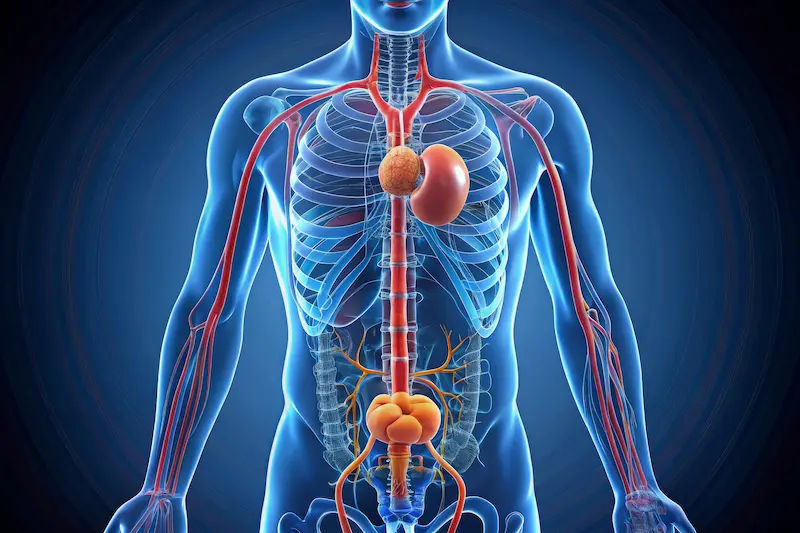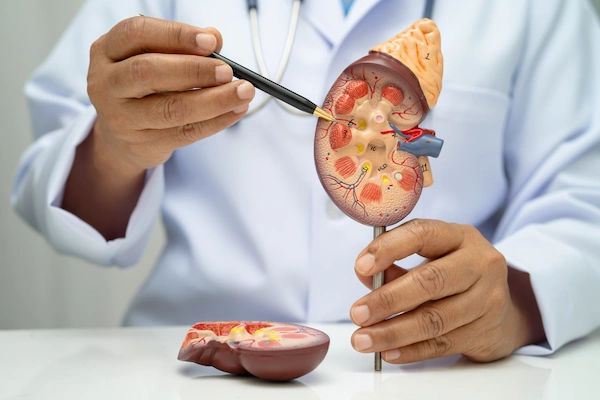- Male
- 33 Years
- 14/08/2025
my foreskin won't pull back over the head of my penis and I'm 33 is there any way to fix this without surgery
Answered by 1 Apollo Doctors
A detailed evaluation will help decide the best course of action.
Dr. Dhankecha Suggests...
Consult a Urologist
Answered 14/08/2025
0
0

More Urology Health Queries
View allMy report says the ureters are obscured and there's a 5 mm kidney stone. Can a stone this size pass without surgery? What noninvasive tests like CT or MRI should I do to check for obstruction and locate the stone?
A 5mm kidney stone has a good chance of passing on its own, but a CT scan or MRI can help determine if the stone is obstructing the ureter and if further intervention is needed. CT scans are the preferred method for assessing kidney stones, as they are highly sensitive and can provide detailed images of the urinary tract.
Answered by 1 Apollo Doctors
I'm worried because I've noticed a cut under the foreskin of my penis and I'm not sure if it's a wart or something else. I'm confused about which specialist to consultshould I see a gynecologist, a surgeon, or a sexologist? Can you please help me understand what kind of doctor would be best to approach for this issue?
surgeon
Answered by 1 Apollo Doctors
I was born with bilateral ureterocele and have been experiencing flank pain, especially on the left side, which gets worse when I drink more water. So far, I haven't had any treatment for it. Do I need surgery to fix this? Could it lead to chronic kidney failure if I don't get it treated now? What are the risks or complications if I do go through with the surgery?
A ureterocele is a dilation of the area where the ureter inserts into the bladder. Ureteroceles are a congenital abnormality which means they are present at birth. It is thought to be due to an abnormality of the formation of the ureter tube as it inserts into the bladder. Ureteroceles occur in about one of every 1000 births and are more common in a duplex kidney, which is a kidney with two ureters that drain into the bladder. If the ureterocele is associated with a duplex kidney, it is the ureter that drains the upper part of the kidney that has the ureterocele. Kidneys that have a ureterocele often are dilated and can have obstruction to urine flow. Ureteroceles are often diagnosed by prenatal ultrasound where a dilated ureter and kidney (or upper part of a kidney) and a cystic structure (the ureterocele) in the bladder is seen. Ureteroceles can also be found by ultrasound after a child has a urinary tract infection or other reason to obtain a renal ultrasound. If the child presents with a urinary tract infection, they may have fever, chills, flank pain, pain with urination, or other urinary symptoms. A ureterocele is most commonly diagnosed by ultrasound. Treatment: In older children, ureteroceles are sometimes treated differently depending on how well the kidney functions, how big the ureterocele is, how severe the dilation of the ureter and kidney is, whether the kidney is a duplex kidney, and whether the other ureter in a duplex kidney has reflux. Treatment options range from observation to several types of reconstructive surgery for the urinary tract. Your urologist will discuss these options with you. Ureteroceles are treated for several reasons. Ureteroceles are believed to increase the risk of urinary tract infection. Ureteroceles often cause obstruction of urine flow from the kidney to the bladder which can damage the kidney over time. Occasionally, ureteroceles are so large that they block urine flow from the other kidney or they block urine flow from the bladder out the urethra. Consult urologist for furthur evaluation and treatment.
Answered by 1 Apollo Doctors
Disclaimer: Answers on Apollo 247 are not intended to replace your doctor advice. Always seek help of a professional doctor in case of an medical emergency or ailment.




.webp)
